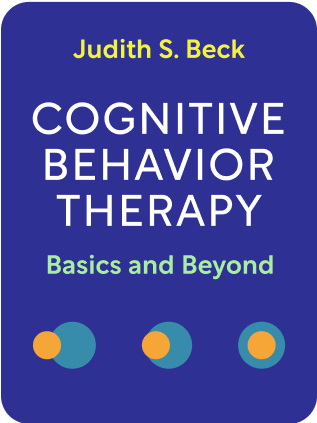

This article is an excerpt from the Shortform book guide to "Cognitive Behavior Therapy: Basics and Beyond" by Judith S. Beck. Shortform has the world's best summaries and analyses of books you should be reading.
Like this article? Sign up for a free trial here .
How can you successfully build therapeutic rapport? Why is strong therapeutic rapport key for the progress of a patient?
Therapeutic rapport is essential for a successful therapy session. It refers to the relationship of mutual trust between therapist and patient. If rapport is not formed during therapy, patients won’t feel comfortable engaging with CBT exercises and will likely not progress.
Keep reading to find out more about therapeutic rapport and how to build it.
How to Build Therapeutic Rapport
A therapeutic relationship that is trusting, empathetic, and collaborative is critical to patient improvement. Here are pointers on how to build strong therapeutic rapport:
- Share your conceptualization with the patient constantly, asking whether it “rings true.”
- “OK, I want to make sure I understand. The situation was [this], and your automatic thought was [this]. This thought made you feel [this emotion], so you acted by doing [this]. Did I get that right?”
- When noticing dysphoria during the session (the patient could be remembering something or reacting to the session itself), address it: “You look upset. What was going through your mind?”
- Positively reinforce patients for providing feedback. “It’s great that you recognized your thinking.”
- Positively reinforce patients for making strides in their therapy. For example, when the patient notices automatic thoughts, suggests new solutions, or does homework.
- Highlight evidence of improvement makes the patient more optimistic that the method is working. Improve the patient’s mood during the session and create a plan to feel better during the week.
- Emphasize the positive.
- Elicit patient strengths.
- Elicit positive data from the preceding week. “What positive things happened since I saw you last?”
- Elicit data contrary to their negative thoughts.
- Ask what positive data means about the patient.
- Give positive feedback on adaptive coping mechanisms: “What a good idea.”
- Don’t attack the core beliefs too early—this can endanger the alliance. Instead, identify the cognitions that are closest to conscious awareness, then work your way down into core beliefs over time.
Planning Treatment and Structuring Sessions
Most patients feel more comfortable when they know what to expect from therapy and what they are expected to do. CBT sessions are designed to be structured and follow a predictable format each time. If your patient knows what to expect, it will help to build therapeutic rapport.
Session agenda at a high level:
- Reestablish the therapeutic alliance and collect data. Set and prioritize the agenda together.
- Discuss the problems on the agenda. Engage in problem-solving and thereby teach cognitive skills.
- Review the session and provide homework.
During the session, maintain the structure of the session:
- Elicit the most important points of the session and make sure those are written down.
- If the patient gets off track, interrupt gently to guide the patient on the most helpful agenda items.

———End of Preview———
Like what you just read? Read the rest of the world's best book summary and analysis of Judith S. Beck's "Cognitive Behavior Therapy: Basics and Beyond" at Shortform .
Here's what you'll find in our full Cognitive Behavior Therapy: Basics and Beyond summary :
- How to use CBT to overcome anxiety, sadness, anger, frustration, and stress
- How to address traumatic events earlier in your life, so that they have less hold on your thinking today
- The key ways to build rapport as a cognitive behavior therapist






